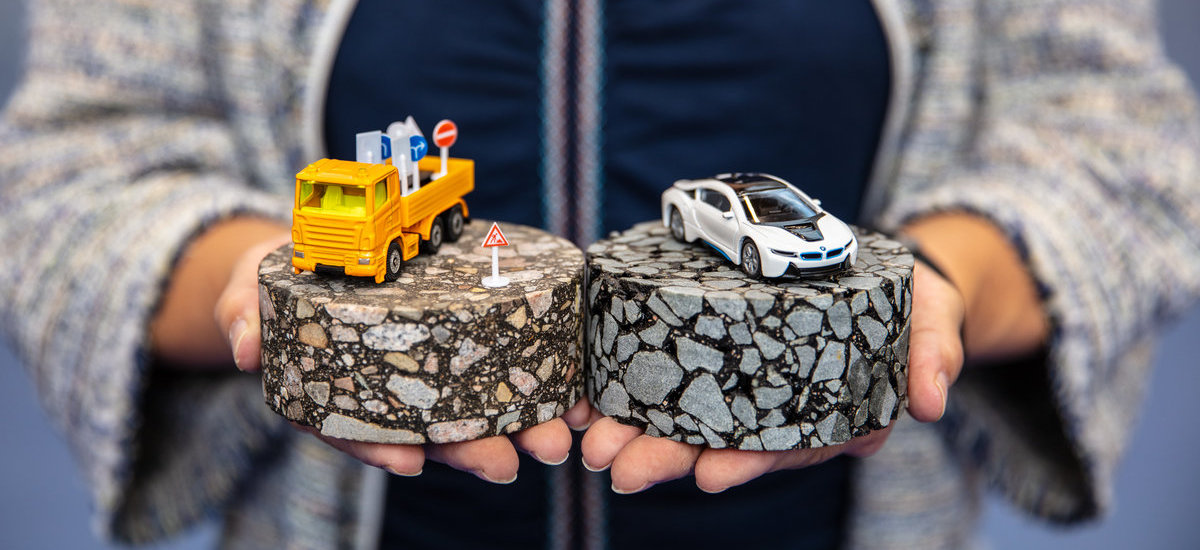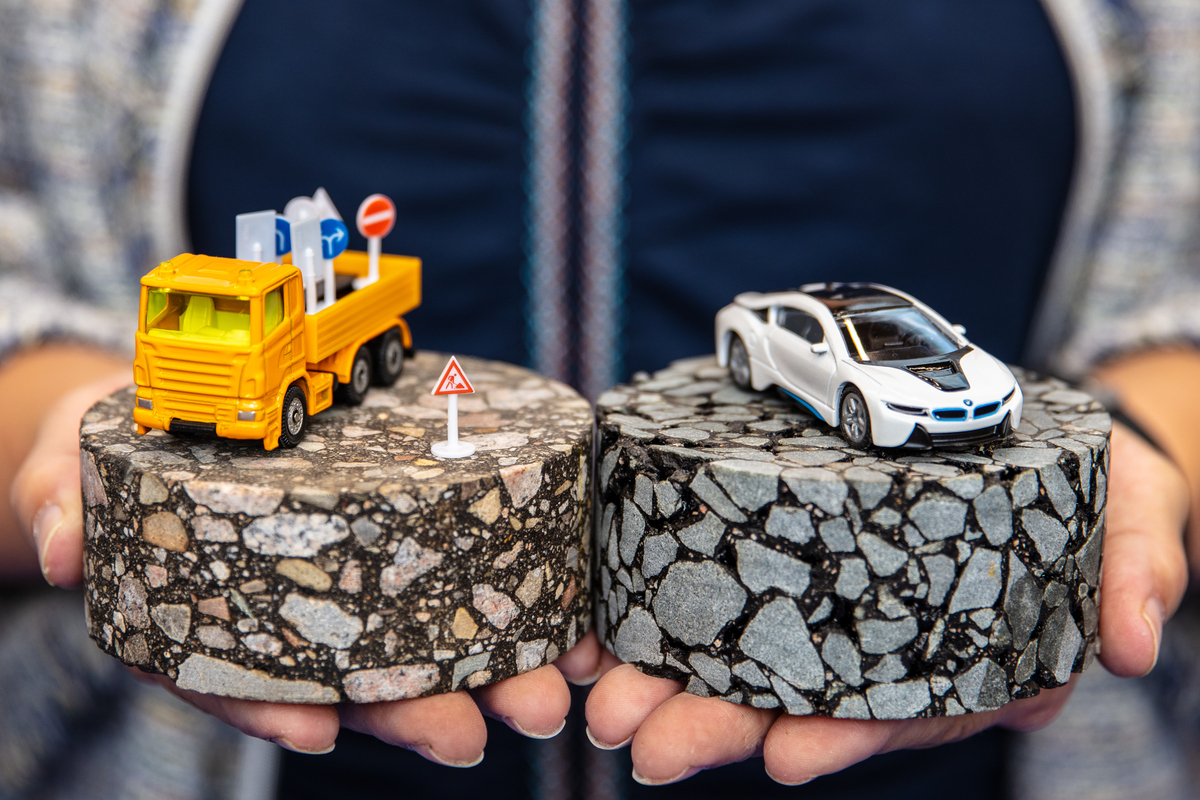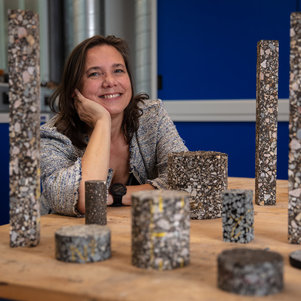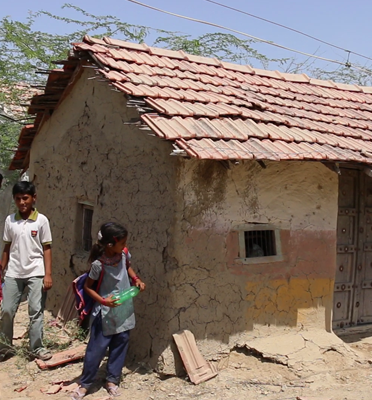Asphalt concrete is a great material for road surfacing purposes but it’s not always the most sustainable of options. Sandra Erkens, professor of Pavement Engineering Practice, is looking for ways of predicting and extending the lifespan of both existing and new pavement materials. Epoxy asphalt may well hold the key to more durable road surfaces. The beginning of November should see the start of the construction of a trial section on a Noord-Holland road to put the new super asphalt through its paces.
The Netherlands has some 140,000 kilometers of paved roads, most of which are covered with asphalt, a mixture of sand, small pebbles and other fillers held together by bitumen binder. Asphalt concrete differs from other materials commonly used in civil and pavement engineering in a number of ways Sandra Erkens says. ‘The main difference is the viscoelasticity of asphalt which enables it to adapt to the movement of the soft Dutch soil. This capacity to ‘flow’ means the material is less likely to break. This viscoelastic property – which is lacking in concrete, for example- means it has the ability to self-heal. Small cracks in the asphalt can disappear without any outside intervention. This happens especially if the material is left in peace for a while. And in our ever-busier country that is getting less likely with time.’
Asphalt behaviour issues
Much is still unclear about the behaviour of asphalt, particularly in the longer term, Erkens says. ‘Asphalt is exposed to a wide range of temperatures and weather conditions, and the nature and amount of traffic also varies. An additional complication when making predictions about the behaviour of asphalt is that the chemical composition of the material varies as well. This variation in properties means you never know what the behaviour of a particular stretch of asphalt is going to be. But that’s what makes it so interesting. There is still a lot left to study and find out when it comes to the properties, lifespan and overall sustainability of asphalt. And while all the asphalt in the Netherlands is already being recycled, for instance as new pavement foundation, or as part of new asphalt mixtures, much more can be done.’
Not very sustainable- as yet
The top layer of the asphalt structure has to be replaced on average every ten to twenty years. That is expensive and not very sustainable, Erkens says. ‘The production of asphalt is done at very high temperatures and that makes it very energy intensive and high in CO2 emissions. So even if we do re-use all our asphalt and most new asphalt is made using old asphalt, we still have a long way to go to make the process truly sustainable. Only then will we be able to meet the energy and CO2 goals, and achieve more circularity.'
Super asphalt
To help green the polluting asphalt industry TU Delft has joined forces with construction company Dura Vermeer. Together they have been developing a sustainable super asphalt. The magic ingredient: epoxy. Erkens: ‘By mixing epoxy resin with bitumen and letting it harden, the asphalt becomes less sensitive to external factors, such as the weather. It also keeps its stiffness and hardness under higher temperatures. Considering the rise in temperature because of climate change that is definitely an important property. The great challenge we are facing is to preserve the advantages of regular asphalt, such as its capacity for self-healing and its recyclability.’
Relatively expensive
The use of epoxy asphalt is not completely new, Erkens says. ‘There are places in the United States which have had epoxy asphalt pavements for over forty years, particularly on bridge decks. Intense traffic and the expansion of the metal structure in high temperatures take a heavy toll on bridges, and the authorities want to keep the need for maintenance to a minimum to avoid long diversion routes for drivers. The reason it is not used more often is cost. It is relatively expensive and to make it commercially viable it would have to last three to four times longer than ordinary asphalt. It looks as if this material fits the bill but we’ll find out for certain when we test it in practice.’
Lifespan
Testing the durability of epoxy asphalt is still mainly laboratory-based. ‘We use fatigue testing to ascertain how often epoxy asphalt can sustain a certain load. This will give us an indication of its lifespan. The lab results seems to indicate that epoxy asphalt is less susceptible to fatigue and wear and tear than ordinary asphalt and will last longer. With Dura Vermeer we are also investigating how best to re-use epoxy asphalt. The first results show that it can be recycled using current methods.’
Epoxy asphalt trial area
In order to find out if the lab results stand up in practice the Noord-Holland authorities have commissioned Dura Vermeer to cover a stretch of the N249 in epoxy asphalt. Erkens: ‘Our TU Delft team will be monitoring the trial area for a number of years. We will be using sensors to monitor stiffness, and we will also be looking at wear and tear at the surface and the occurrence of cracks. This is not the first trial area but it the first to be monitored in such detail using equipment.’
Not sustainable everywhere
Despite the promising potential of epoxy asphalt Erkens does not expect the entire road network of the Netherlands to be covered in it by the next decade. ‘It can only have its longer lasting effect if it is left in peace for long periods of time. In and around urban areas there are road works at least every ten years to replace cables or pipes. Epoxy asphalt is far too expensive for that and its application in that case would not be sustainable.’
Other asphalt innovations
Epoxy asphalt is not the only sustainable solution, Erkens emphasises. ‘The provincial authorities, Rijkswaterstaat, research institutes and particularly construction companies are participating in various regional and national programmes, such as Asfalt-Impuls, to investigate more sustainable production methods for asphalt, by using lower temperatures to reduce energy use, for instance, and upping re-use and introducing asphalt rejuvenation techniques for maintenance. We are also looking at bio asphalt development and the application of epoxy in ZOAB, or porous asphalt. So although there is less traffic, things are definitely moving as far as the asphalt is concerned.’
Team
The epoxy asphalt trial in Noord-Holland is carried out by a team of researchers. The work at the trial section will be led by ir. Panos Apostolidis (PhD). Part of the research into wear and tear will be carried out by dr. Ruxin Jing (postdoc) and project coordination is in the hands of dr. Xueyan Liu (Associate Professor).
Sandra Erkens is professor of Pavement Engineering Practice at TU Delft. She has been involved in paving engineering research around the world since 1997. Apart from her position at the university she is also a pavement materials and construction specialist at Rijkswaterstaat. Erkens is a member of the board of APSE, a cooperation of international academic pavement engineering groups and InfraQuest, the competence centre for roads and structures set up by Rijkswaterstaat, TU Delft en TNO.





